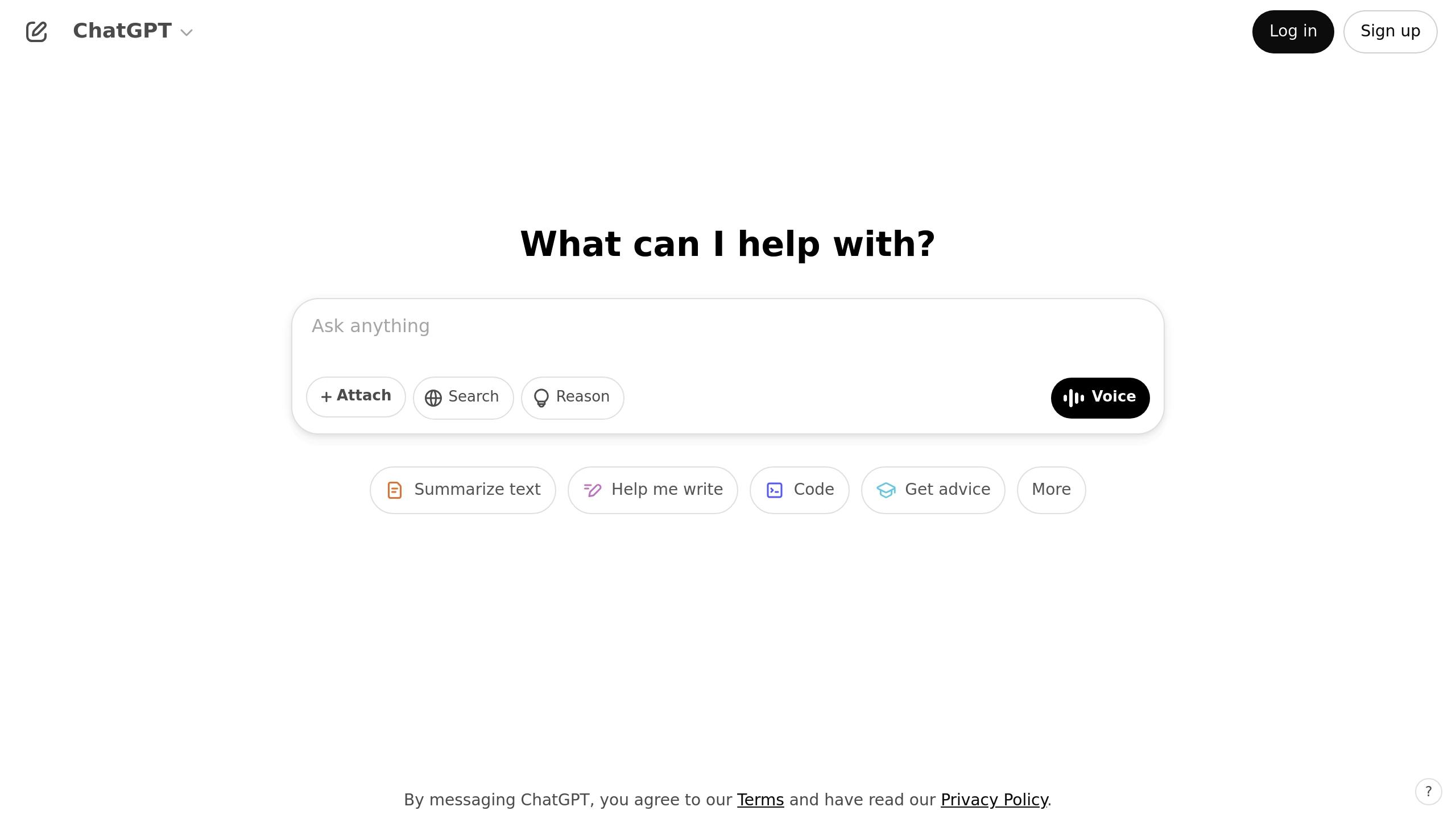AI tools make money through various pricing models tailored to user needs and business goals. Here's a quick breakdown:
- Subscription Plans: Regular users pay monthly or annually for consistent access. Example: Notion AI starts at $8/month per user.
- Usage-Based Pricing: Costs depend on tool usage. Example: Claude charges $0.80 per million tokens for prompts.
- Freemium Models: Basic features are free, with paid upgrades for advanced options. Example: Grammarly offers free and premium tiers.
- Enterprise Plans: Custom pricing for businesses with large-scale needs. Example: IBM Watson Assistant starts at $140/month for 1,000 active users.
Quick Comparison
| Pricing Model | Benefits | Challenges | Best For |
|---|---|---|---|
| Subscription | Predictable revenue, user loyalty | Risk of churn | Regular, ongoing use |
| Usage-Based | Pay-as-you-go flexibility | Revenue unpredictability | Variable or fluctuating needs |
| Freemium | Attracts many users | Low conversion rates | Mass-market tools |
| Enterprise | Scales for large businesses | Higher complexity in setup | Business and enterprise users |
AI companies often combine these models to balance accessibility and profitability. The key is aligning pricing with user value and market demands.
Pricing Strategies for AI-Powered Software
Common AI Tool Business Models
AI tools use various approaches to generate revenue. By 2026, about 80% of enterprises are expected to either use generative AI APIs or develop applications with generative AI capabilities. These models range from straightforward subscriptions to flexible, usage-based pricing.
Monthly and Annual Subscriptions
Subscription pricing ensures steady revenue and gives users consistent access to features. For example, Notion AI charges $8 per member monthly (with annual billing) or $10 for month-to-month plans. Similarly, Midjourney offers a basic plan at $10 per month, which includes approximately 200 limited generations.
"Finding the efficient frontier between quality and interactivity is crucial."
– Alexandru Costin, VP of Generative AI at Adobe
Usage-Based Pricing
This model links costs directly to how much the tool is used. Amazon Lex, for instance, charges $0.004 per speech request and $0.00075 per text request. Claude uses a token-based system, with prices starting at $0.80 per million tokens for prompts and $2.40 per million tokens for completions. This structure is ideal for users with fluctuating needs.
Free-to-Premium Models
The freemium model attracts users by offering basic features for free while advanced functionalities come at a cost. Grammarly began with free features and later added tiered subscription options. This strategy aligns with the roughly 70% of SaaS companies that adopt feature-based pricing.
Business and Enterprise Plans
Enterprise plans offer tailored features and volume-based pricing. For example, IBM Watson Assistant starts at $140 for 1,000 monthly active users, while Salesforce Einstein Predictions costs $75 per user per month with annual billing.
| Pricing Model | Best For | Example | Starting Price |
|---|---|---|---|
| Subscription | Regular users | Notion AI | $8/month/user |
| Usage-Based | Variable needs | Claude | $0.80/million tokens |
| Freemium | Growth focus | Grammarly | Free + Premium tiers |
| Enterprise | Business scale | IBM Watson | $140/month |
"The goal here is to tie your pricing mechanism to value creation. That is where value is aligned. You did add value, therefore you should get paid. But you don't want to disincentive usage."
– Jake Saper, Emergence Capital
Adopting AI effectively can increase company revenue by up to 20%. Additionally, there’s a growing trend toward combining multiple pricing strategies to maximize both value delivery and revenue capture. Up next, we’ll dive into the pros and cons of these models.
sbb-itb-212c9ea
Top AI Tools and Their Pricing
AI tools often rely on different pricing strategies to balance user accessibility with profitability. Let’s take a closer look at how some of the most popular tools structure their pricing.
ChatGPT's Pricing Model

ChatGPT follows a freemium approach. Basic access is free, but users can upgrade to a paid subscription for enhanced features. Additionally, its API is billed based on usage, making it scalable for businesses integrating AI into their systems.
DALL-E's Payment System
DALL-E 3 charges users per image generated. To make this flexible, it offers credit bundles that cater to both occasional users and professionals who need more frequent access.
AI Apps Directory's Revenue Strategy
The AI Apps Directory generates income by offering premium placement options for developers. This approach, combined with a rigorous verification process, helps maintain quality while showcasing over 1,000 AI tools.
These examples show how pricing models can align with both the value of the product and the needs of its users. The next section dives deeper into comparing these strategies.
AI Pricing Models: Benefits and Drawbacks
Different pricing models come with their own pros and cons. Let’s break down the main points for each.
Subscription models provide steady, recurring revenue and help build strong customer loyalty by integrating deeply into workflows. But there's a catch - if customers don’t see ongoing value, churn rates can spike.
Usage-based pricing is attractive to customers who only want to pay for what they use. In fact, 60% of SaaS companies using this model report an impressive 125% net dollar retention. On the flip side, it’s harder to predict revenue with this approach.
Freemium models are great for attracting a large number of users, but only a small fraction - around 2–4% - actually convert to paying customers.
"The easiest way to get 1 million people paying is to get 1 billion people using"
Model Comparison Table
| Pricing Model | Key Benefits | Primary Challenges | Best For |
|---|---|---|---|
| Subscription | • Steady revenue streams • Builds loyalty • Easier to predict income |
• High churn if value isn't clear • Higher marketing costs |
Tools with consistent, ongoing use |
| Usage-Based | • Low entry cost for customers • High retention rates (125%) |
• Harder to predict revenue | API services and processing tools |
| Freemium | • Attracts a broad audience • Easy to get started |
• Low conversion rates (2–4%) | Mass-market AI applications |
| Hybrid | • Adapts to diverse user needs • Combines revenue streams • Reaches wider markets |
- | Enterprise-grade AI solutions |
To succeed, companies must align their pricing with the product’s value and the needs of their target market. AI-driven tools often have higher infrastructure costs than traditional SaaS products, so pricing strategies may need frequent updates to keep up with changing technology and market demands.
Conclusion: Choosing the Right Pricing Model
Finding the right pricing approach means balancing what users can afford with what ensures profitability for developers.
Freemium models are a good starting point for early-stage AI tools, helping attract users. However, the high costs of infrastructure make it essential to have a clear plan for generating revenue. Limiting features or usage often nudges power users toward paid plans.
For enterprise-focused tools, a mix of subscriptions and usage-based fees can work well. This approach keeps initial costs manageable for users while protecting profit margins.
When deciding on a pricing model, consider these critical factors:
- Infrastructure costs: Account for API expenses, computing power, and scalability requirements.
- User behavior: Understand how different segments interact with and use your tool.
- Market positioning: Match your pricing to what your target audience is willing to pay.
Check out the AI Apps directory to see examples of pricing strategies that strike the right balance.



